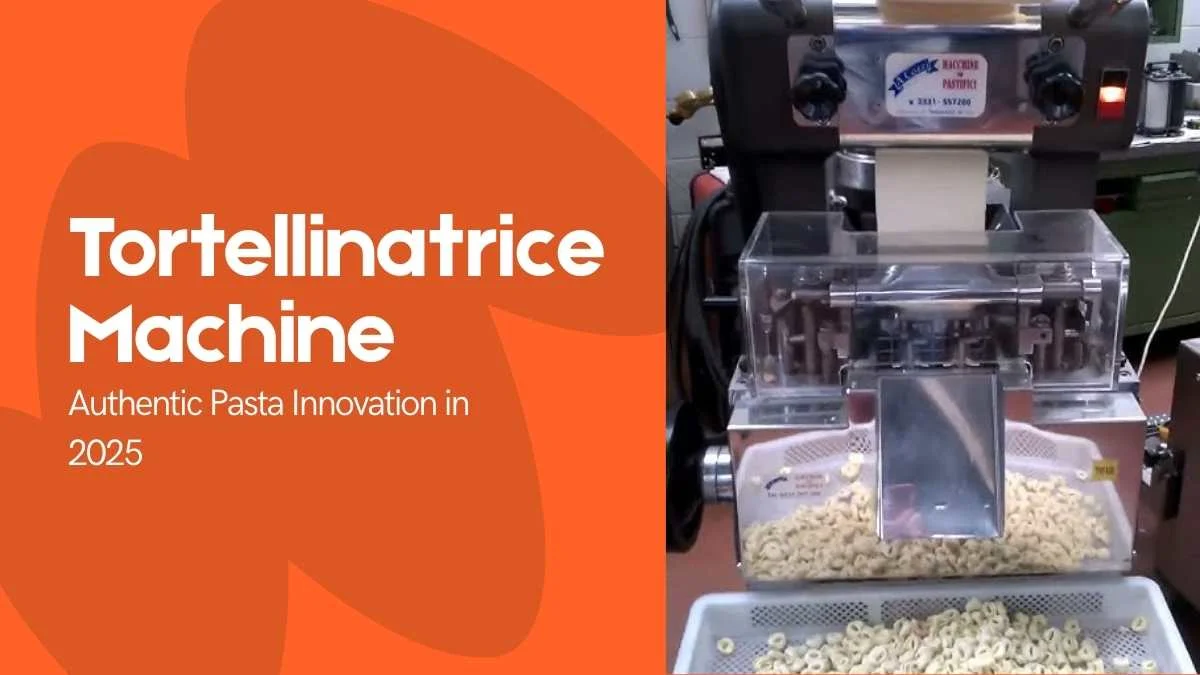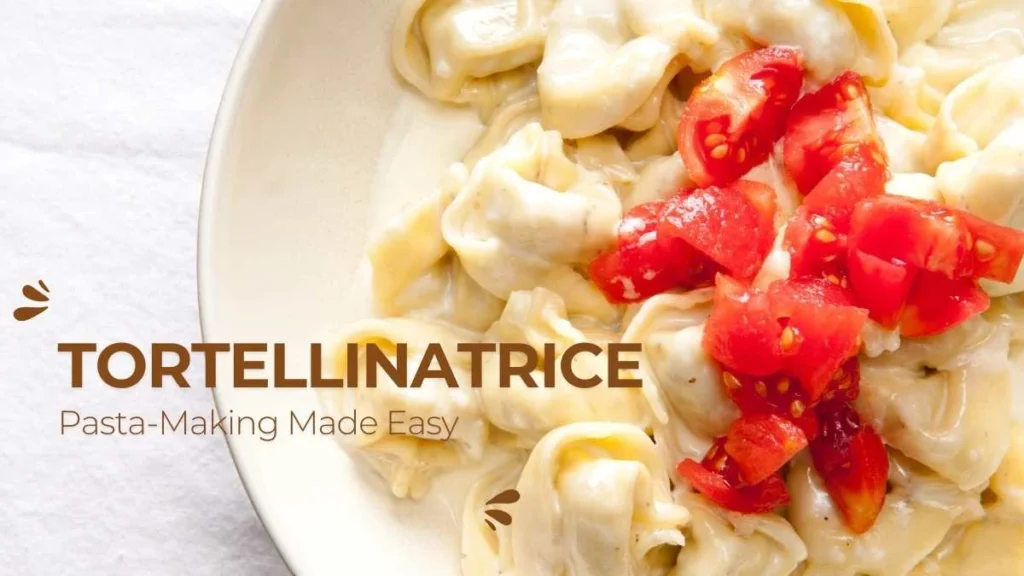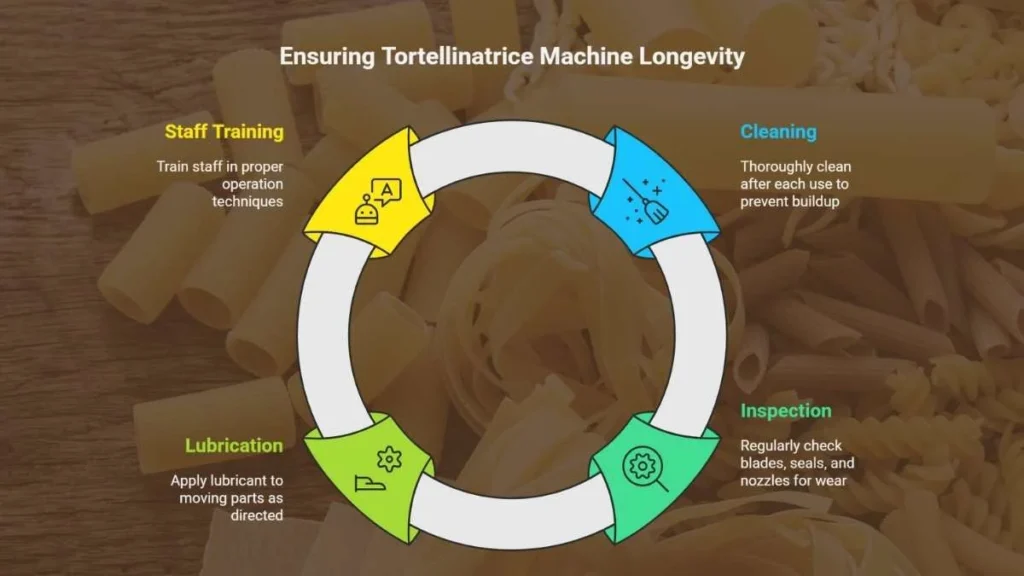FOOD AND DRINKS
Tortellinatrice Machine: Authentic Pasta Innovation in 2025

Tortellinatrice is a pasta-making machine designed to produce traditional Italian tortellini with speed, precision, and consistency. It automates the delicate steps of shaping, filling, and sealing stuffed pasta, making it a trusted tool for restaurants, pasta shops, and the food industry.
What makes the tortellinatrice special is its ability to preserve authentic Italian textures and flavors while boosting efficiency. By blending tradition with modern technology, it ensures that tortellini remain a symbol of culinary heritage in both artisanal kitchens and large-scale production facilities.
Table of Contents
The Origins of Tortellini and the Rise of Automation
Tortellini originated in the Emilia-Romagna region of Italy, specifically in the cities of Bologna and Modena. Legend has it that the navel of Venus, the Roman goddess of love, inspired the pasta’s iconic ring shape. Traditionally, tortellini were filled with a mixture of meats, cheeses, and spices, then served in broth or with rich sauces.
While handmade tortellini remain a hallmark of Italian cuisine, the demand for pasta around the world has grown exponentially. Restaurants, pasta shops, and food manufacturers faced the challenge of producing large quantities without compromising on quality. This demand for efficiency gave birth to the tortellinatrice, a machine that respects tradition while meeting modern needs.

By replicating the movements of skilled hands through advanced mechanics, the tortellinatrice allows tortellini to retain their artisanal appeal while being produced at a larger scale.
What Is a Tortellinatrice?
A tortellinatrice is a pasta-making machine engineered to automate the creation of tortellini. Unlike general pasta machines, it is highly specialized, focusing on the precise folding and sealing process required for stuffed pasta. Its main functions include:
- Sheeting dough into a uniform thickness.
- Dispensing filling consistently into the pasta.
- Shaping tortellini into their signature ring-like form.
- Sealing edges to prevent leaks during cooking.
Depending on the model, tortellinatrici (plural) can be small countertop units for artisanal pasta shops or large industrial machines for mass production.
Key Components of the Machine
A tortellinatrice is built with precision-engineered parts. Typical models include:
- Dough Feed System: Rolls sheets evenly.
- Filling Hopper: Dispenses exact filling amounts.
- Molding Unit: Shapes dough into the iconic ring.
- Sealing Mechanism: Ensures pasta holds during boiling.
- Cutting Blades: Creates uniform pieces.
- Output Conveyor: Moves pasta for cooking or storage.
Modern machines often feature stainless steel for hygiene, adjustable settings, and digital controls for ease of use.
How a Tortellinatrice Works
The process of producing tortellini with a tortellinatrice can be summarized in four stages:
Dough Preparation
The dough is first rolled into thin sheets, either manually or with the machine’s sheeter.
Filling Application
The filling hopper dispenses the chosen mixture (meat, cheese, or vegetables) into evenly spaced portions on the dough sheet.
Folding and Shaping
The machine then folds the dough over the filling, shaping it into the traditional ring form associated with tortellini.
Sealing and Cutting
The edges are pressed to seal the pasta and cut into individual pieces, ensuring uniformity and preventing breakage during cooking.
This automation allows businesses to produce hundreds or even thousands of tortellini per hour without losing the authentic look and texture of handmade pasta.
Benefits for Businesses
The tortellinatrice offers advantages that extend beyond efficiency:
- Higher Output: Meets growing demand effortlessly.
- Consistency: Uniform pasta pieces every time.
- Tradition Meets Tech: Maintains authentic flavors.
- Hygiene Compliance: Food-safe design with easy cleaning.
- Versatility: Works with various fillings and doughs.
Comparing Small and Industrial Models
| Feature | Small-Scale Model | Industrial Model |
| Output Capacity | Hundreds/day | Thousands/hour |
| Size & Portability | Compact, mobile | Large, fixed |
| Best For | Restaurants, shops | Factories, exporters |
| Customization | High flexibility | Bulk uniformity |
| Cost Range | Affordable | Premium |
Preserving Culinary Heritage
While the tortellinatrice is a product of modern technology, it plays a vital role in preserving Italian culinary heritage. Rather than replacing tradition, it complements it by allowing small pasta makers to compete with large manufacturers without losing authenticity, ensuring that more people around the world can enjoy fresh tortellini that reflect Italy’s rich food culture, and protecting traditional recipes through consistent reproduction at scale. In many ways, the tortellinatrice is not just a machine but a cultural ambassador, carrying the legacy of Italian cuisine into the future.
Choosing the Right Tortellinatrice
When selecting a model, consider:
- Production Needs: Small vs. industrial scale.
- Budget: Affordable semi-automatic vs. advanced machines.
- Customization: Ability to adjust dough thickness and fillings.
- Ease of Maintenance: Look for user-friendly cleaning systems.
This ensures alignment with both business goals and culinary standards.
Maintenance Tips for Longevity
To ensure years of reliable use:
- Clean thoroughly after each session.
- Regularly inspect blades, seals, and nozzles.
- Lubricate moving parts as directed.
- Train staff in proper operation.
Good maintenance extends machine life and guarantees consistent pasta quality.

FAQs
Q1: Can a tortellinatrice make other pasta types?
Yes, advanced models often support ravioli or cappelletti production.
Q2: Is it suitable for gluten-free dough?
With proper dough consistency, many machines can handle gluten-free recipes.
Q3: How long does it take to clean the machine?
On average, thorough cleaning takes 20–30 minutes, depending on model size.
Conclusion
The tortellinatrice is more than a pasta-making machine; it is a bridge between Italy’s rich culinary traditions and the demands of modern food production. By automating the delicate process of crafting tortellini it empowers restaurants, pasta shops, and industries to serve authentic pasta at scale without losing quality or character.
As innovation continues, the tortellinatrice will likely become an even more vital tool in kitchens worldwide, ensuring that tortellini, a symbol of Italian passion and artistry, remains accessible to future generations.
-

 FRIENDSHIP MESSAGES4 weeks ago
FRIENDSHIP MESSAGES4 weeks ago100+ Heart Touching Sorry Messages for Friends
-

 ANNIVERSARY WISHES5 months ago
ANNIVERSARY WISHES5 months ago100+ Beautiful Engagement Anniversary Wishes Messages and Quotes
-

 BIRTHDAY WISHES4 months ago
BIRTHDAY WISHES4 months ago300+ Happy Birthday Wishes for Brother | Heart Touching Happy Birthday Brother
-

 BIRTHDAY WISHES5 months ago
BIRTHDAY WISHES5 months ago200+ Unique Birthday Wishes for Your Best Friend to Impress on Their Big Day




































